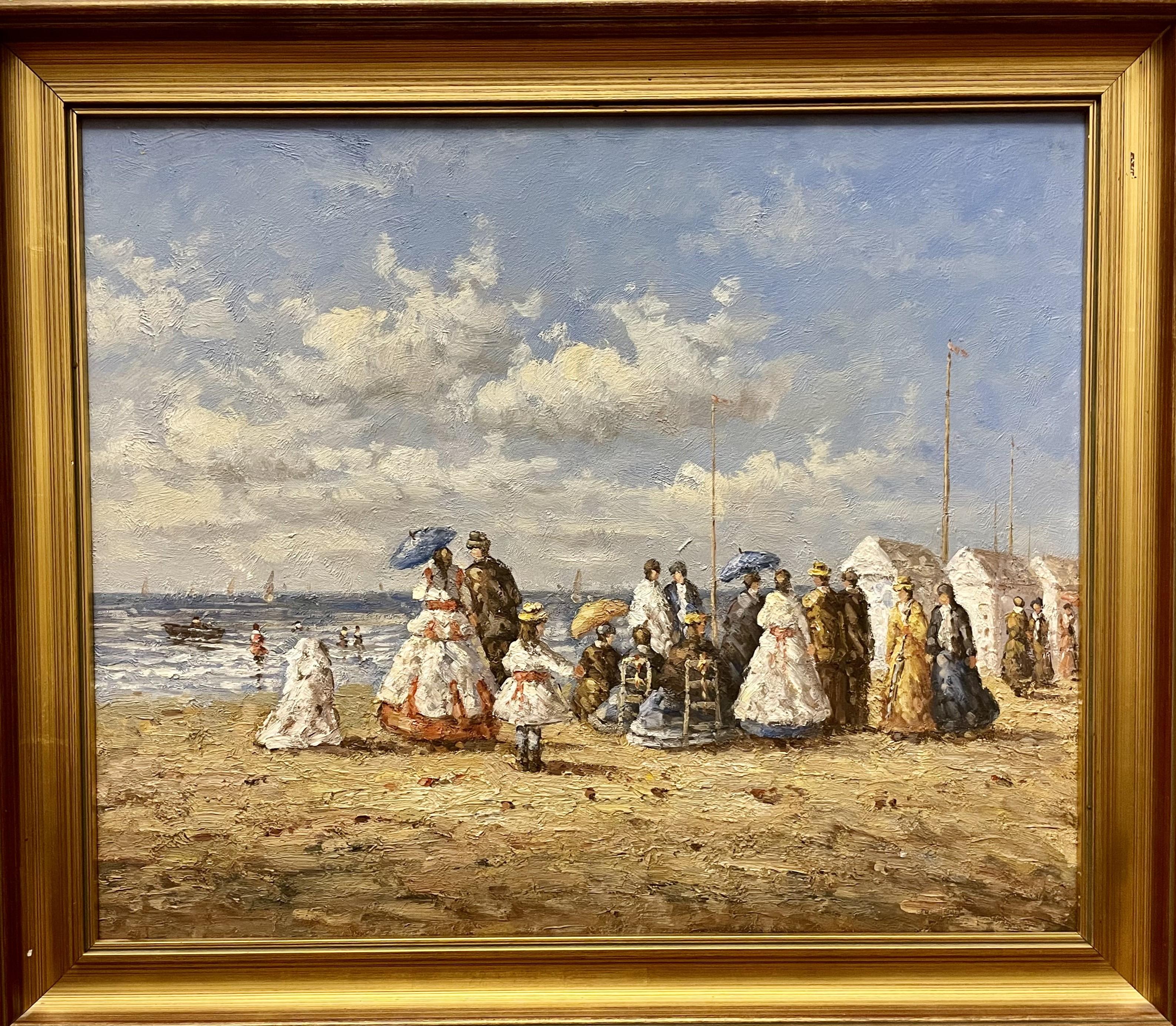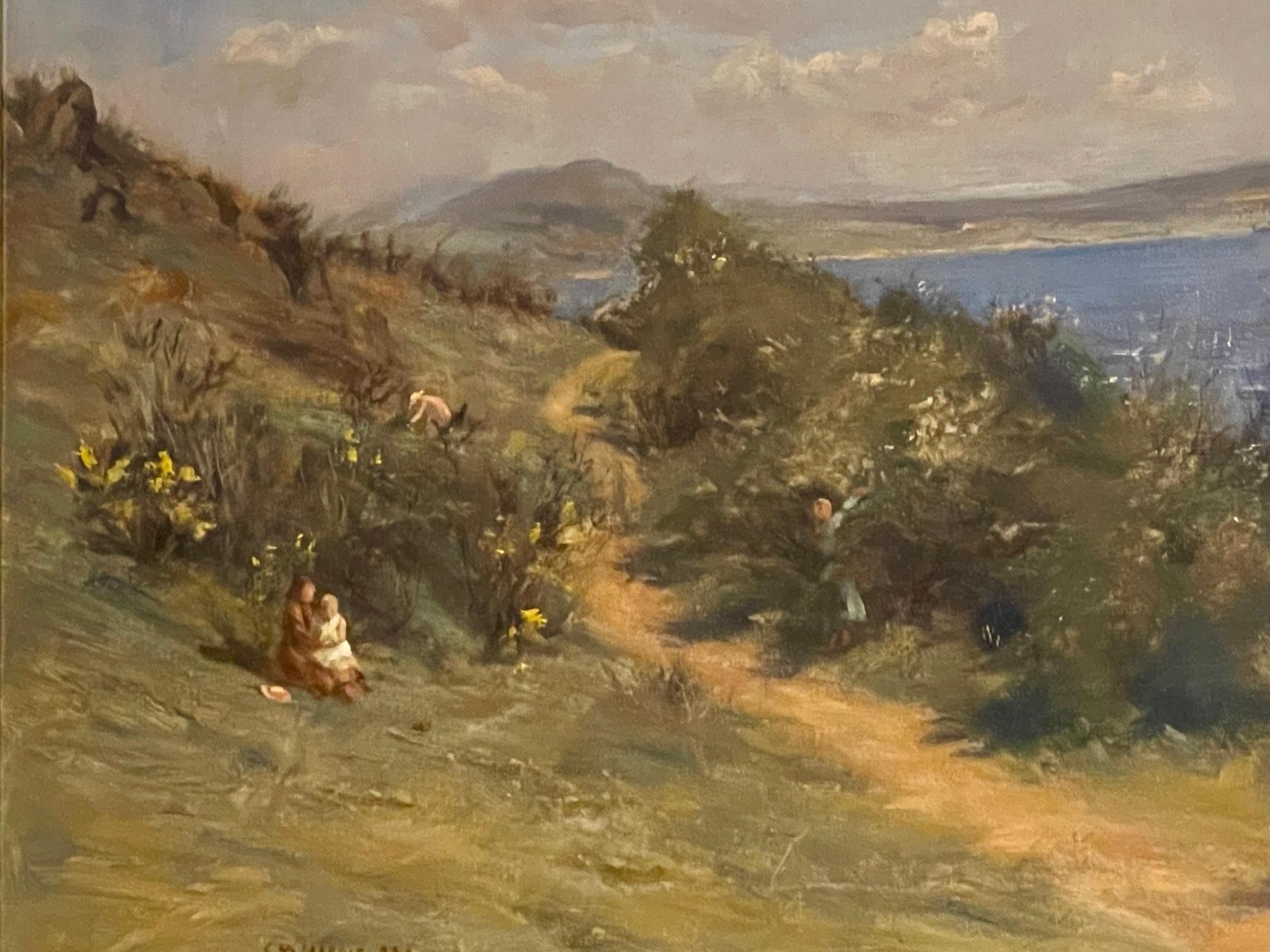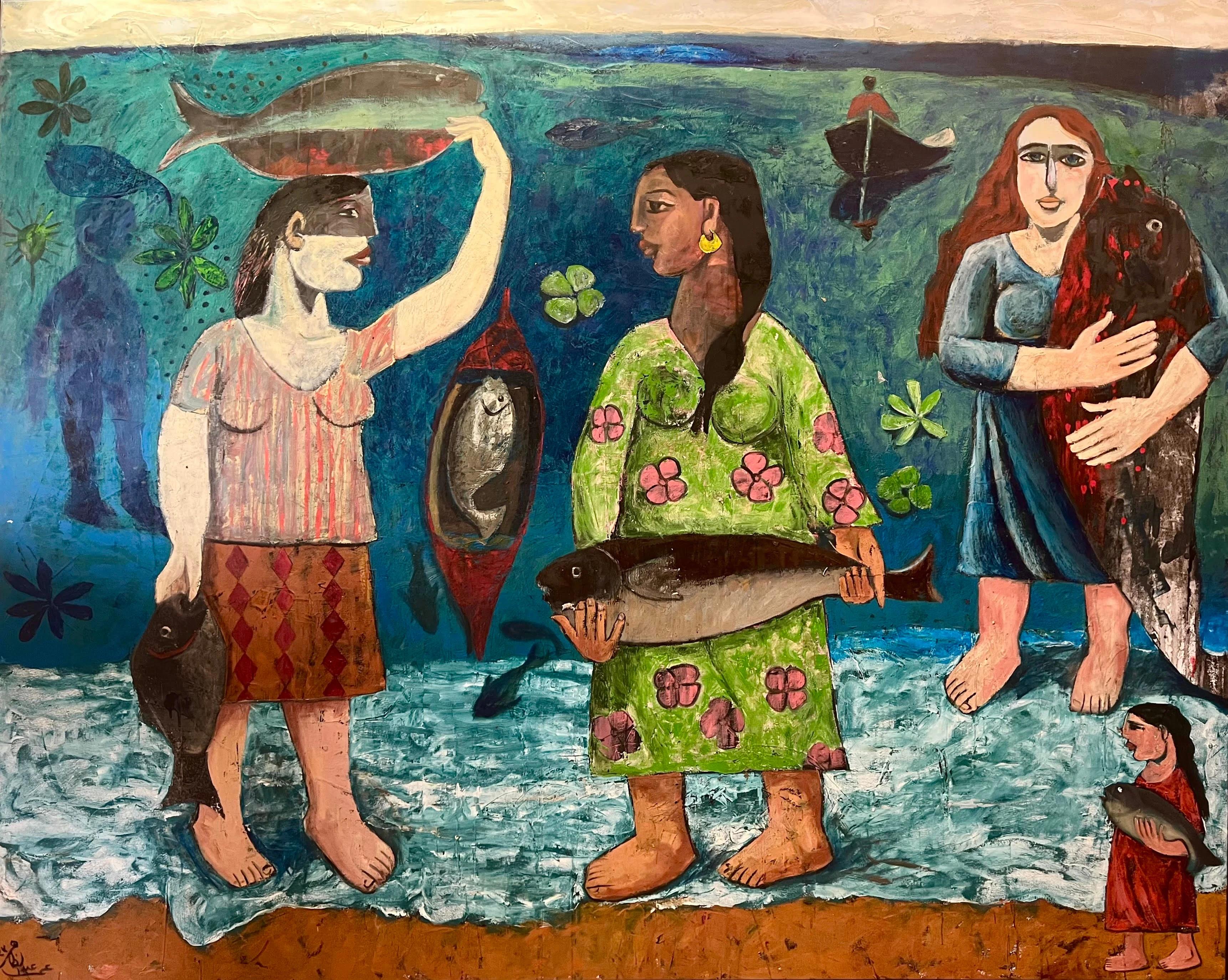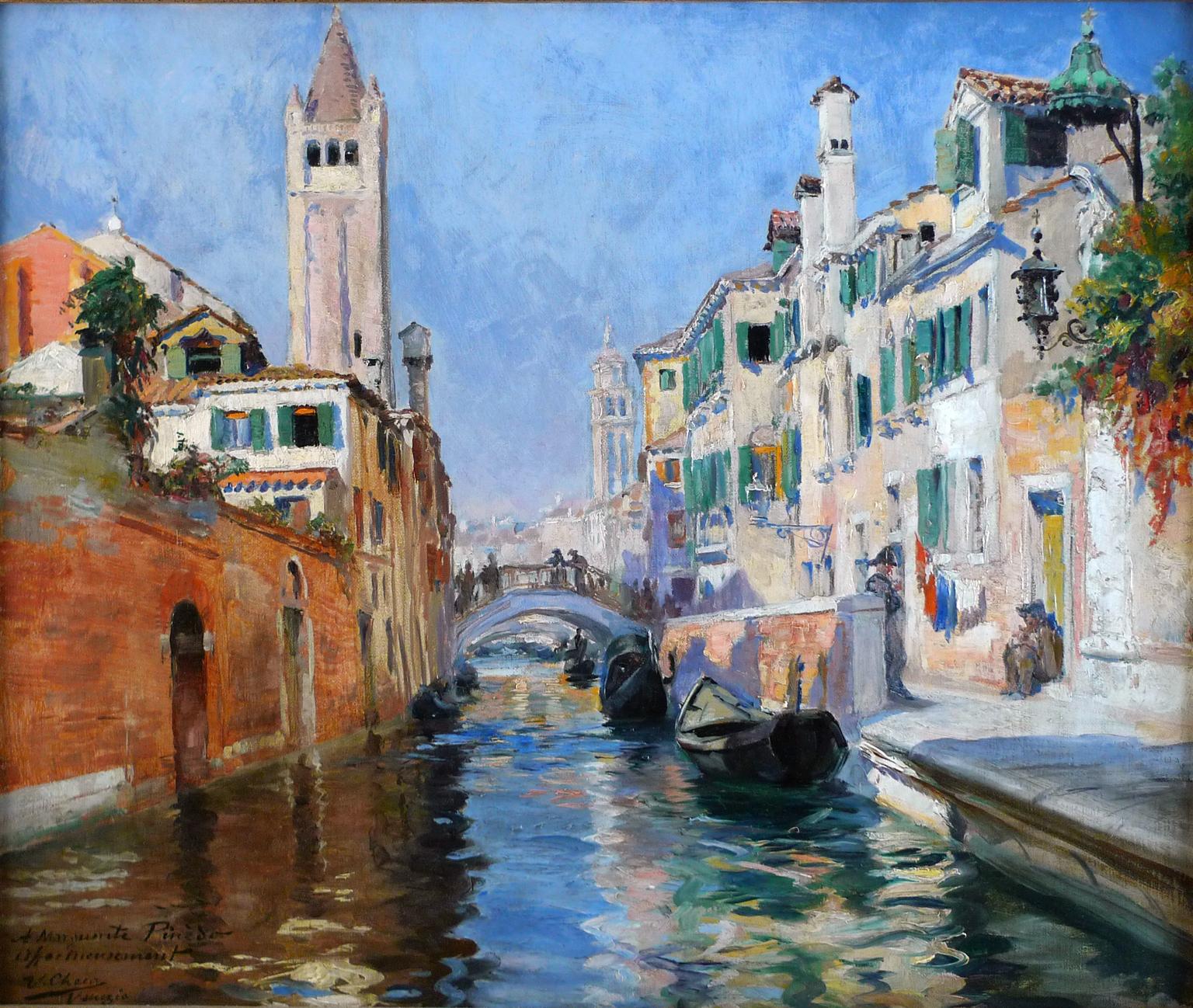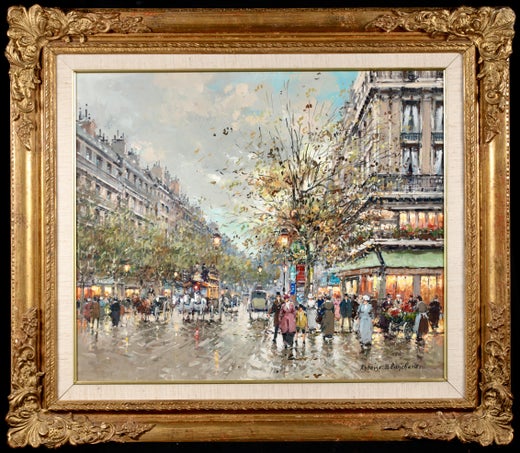Antoine BlanchardAvenue des Champs-Elysses, ParisMid 20th Century
Mid 20th Century
About the Item
- Creator:Antoine Blanchard (1910-1988, French)
- Creation Year:Mid 20th Century
- Dimensions:Height: 26.5 in (67.31 cm)Width: 30 in (76.2 cm)Depth: 1.5 in (3.81 cm)
- Medium:
- Movement & Style:
- Period:
- Condition:
- Gallery Location:Missouri, MO
- Reference Number:1stDibs: LU747312648332
Antoine Blanchard
Antoine Blanchard was born in France on November 15, 1910, in a small village near the banks of the Loire. He was the eldest of three children, and his father, a carver, managed a small carpentry and furniture shop. Blanchard would watch his father hand carve the furniture, and he began to display an artistic flair early in life — in an effort to promote this talent, his parents sent him to Blois for drawing lessons. He continued his training in Rennes at the Ecole des Beaux-Arts where he studied sculpture and drawing. Upon completion of his studies, he was awarded the school’s highest award: Le Prix du Ministre.
By 1932 Blanchard left Rennes and traveled to Paris to study. He enrolled at the Ecole des Beaux-Arts and after a few years entered the competition for the Prix de Rome. It was in Paris that he developed a love for the city and its street life. In 1939 Blanchard married a young woman he met in Paris, and in September of that year war broke out and he was called up for service. It was not until 1942 that he would return to his art.
Blanchard’s daughter Nicole was born in 1944 — she too would follow in the family tradition and after the birth of her two daughters, she became an artist working under the name A. Champeau. It was also around this time that Blanchard's father passed away, and he was compelled to return to his hometown and run the family business — giving him little time to paint.
The artist’s second daughter, Evelyn, was born in 1947, and by 1948, he had given control of the family business to his younger brother and returned to Paris to paint. Contemporary life in Paris had changed, and Blanchard longed for the bygone days. He began to research the Belle Époque period in Paris — reading and studying all the material on the period he could find.
Many of the subjects and scenes Blanchard portrayed were taken from images he collected of Paris during the 1890s, and he would often work on paintings for days or months before he finally felt they were complete. A.P. Larde comments in his book Antoine Blanchard, His Life His Work that he had always spent much time on his work — this explains why his production has always been rather limited, unlike the hurried and multiple proliferations of some modern artists. Delicate touches of luminous and shimmering tones produce a marvelous impression of harmony, brightness and light. Alternate shadings and lights, sensitive and mellow blending allow the artist to attain a hardly-ever reached degree of grace, of radiant and glimmering freshness.
Larde writes that Blanchard’s works are, first of all, a marvelous invitation to an ideal walk through old Paris, so different from that of today. Although a large number of historical monuments remain, today's Paris has little in common with Paris at the turn of the century; the scenery may be almost the same, but daily life as its characters has totally changed; the customs have been entirely transformed. In his landscape paintings, Blanchard invites us to relive this period by showing us pleasant strolls along embankments, squares and boulevards at a period in Parisian life when time did not count, when one had all one's time to idle, to stroll along the streets, to window-shop, to walk quietly along the boulevards or spend the afternoon in a sidewalk café.
Like his contemporary, Édouard Cortès, Blanchard devoted his artistic career to the depiction of Paris through all its daily and seasonal changes. But he was not an imitator of Cortès, but rather depicted the life of Paris at the turn of the century from his own point of view and with his own unique style. Blanchard always used small strokes, with a delicate, enveloping and mellow treatment; the slight haziness, which is a characteristic of his work, in many ways recalls the great masters of the Impressionist period.
Whether it was l'Arc de Triomphe, la Madeleine, Café de la Paix, Notre Dame or the dozens of other historical monuments and buildings of Paris, Blanchard’s focus was on the daily life of Paris at the turn of the century. His work became highly sought after, and collectors from around the world vied to acquire his new works. Today he is considered one of the leading exponents of the School of Paris painters.
Find original Antoine Blanchard paintings on 1stDibs.
(Biography provided by Lincoln Glenn)
- ShippingRetrieving quote...Ships From: Missouri, MO
- Return PolicyA return for this item may be initiated within 2 days of delivery.
- The Deer HuntersLocated in Missouri, MOLaverne Nelson Black (American, 1887-1938) "The Deer Hunters" Signed Lower Left Canvas: 24 x 22 inches Framed: 30.5 x 28.5 inches Born in Viola,...Category
Early 20th Century American Impressionist Landscape Paintings
MaterialsCanvas, Oil
- Boulevard des Capucines et Rue de MadelaineBy Édouard Leon CortèsLocated in Missouri, MOBoulevard des Capucines et Rue de Madelaine Edouard Cortes (French, 1882-1969) Signed Lower right 18 x 22 inches 25 x 29 inches with frame Cortès was born in Lagny, France on April ...Category
20th Century Impressionist Figurative Paintings
MaterialsCanvas, Oil
- White and BlueBy Nicola SimbariLocated in Missouri, MOCanvas Size: approx 32 x 39 inches Framed Size: approx. 37 x 45 inches Nicola Simbari is a painter of semi-abstract impressionist works. He is a colorist who favors brilliant tones...Category
Late 20th Century Impressionist Figurative Paintings
MaterialsCanvas, Oil
- Avenue de Friedland, L’Arc de TriompheBy Édouard Leon CortèsLocated in Missouri, MOFramed Size: 21 x 26 inches *This work has been authenticated by Nicole Verdier Provenance: Johnson Gallery, Chicago IL, circa 1967/1968 Cortès was born in Lagny, France on April 26, 1882. During his early lifetime, Paris was the center of the art world. Artist from across the globe traveled there to study and paint it's beautiful countryside and cities; views of Paris, or as it became known 'the City of Lights', were in great demand by both collectors and tourists. Édouard Cortès, along with other artists like Eugene Galien-Laloue (1854-1941), Luigi Loir (1845-1916) and Jean Beraud (1849-1936) answered their call. Specializing in Paris street scenes, each of these artists captured the city during its heyday and continued with these scenes well into the 20th century.Édouard was the son of Antonio Cortès - the Spanish Court painter - who was himself the son of the artisan André Cortès...Category
Mid-20th Century Impressionist Landscape Paintings
MaterialsCanvas, Oil
- Le Quais et la LouvreBy Antoine BlanchardLocated in Missouri, MOAntoine Blanchard "Le Quais et la Louvre" Oil on Canvas Signed Canvas Size: 13 x 18 inches Framed Size: 22.5 x 27.5 inches Antoine Blanchard French (1910-1...Category
Late 20th Century Impressionist Figurative Paintings
MaterialsOil, Canvas
- Rue de la Paix, ParisBy Francois GeromeLocated in Missouri, MOFrancois Gerome "Rue de la Paix, Paris" c. 1940s Oil on Canvas approx. 10 x 8 inches approx 13 x 11 inches framed FRANCOIS GEROME French, 1895 Francois Gerome was born in Budapest ...Category
1940s Impressionist Figurative Paintings
MaterialsOil, Canvas
- Edwardian Beach Scene, British 20th century oil on canvasLocated in Hillsborough, NCRichly-colored and vibrant Edwardian Beach Scene, British oil painting on canvas in impressionist style, presented in contemporary gold frame. The oil paint is raised and textured, lifting the beach sands, sea, sky and dresses from the canvas. Gathering in Edwardian period costuming looks out over the sands to the sea and clouds, with distant sailboats and children playing in the waves. This is a delightful contemporary painting, unsigned, but original oil dating to the 20th century. Framers tags verso from Oxford and Glasgow. In very good condition, with a few minor chips on the gold frame, but otherwise the painting is bright and beautiful. Provenance to gallery in the United Kingdom, imported by Saltire Gallerie...Category
20th Century Impressionist Figurative Paintings
MaterialsOil, Canvas
- Picking BlackberriesBy Charles Martin HardieLocated in Hillsborough, NC'Picking Blackberries' is a 19th/early 20th century oil on canvas painting of a Scottish coastal path view with yellow gorse and berry bushes. Children are picking berries or sitting enjoying the view overlooking the sea, depicting halcyon days of summer. Scottish artist Charles Martin Hardie...Category
Late 19th Century Impressionist Landscape Paintings
MaterialsCanvas, Oil
- "Maritime Maternal" Oil painting 68" x 86" inch by Omar Abdel ZaherLocated in Culver City, CA"Maritime Maternal" Oil painting 68" x 86" inch by Omar Abdel Zaher Abdel Zaher is a graduate of the Academy of Fine Arts in Helwan and has been painting for three decades and has n...Category
21st Century and Contemporary Impressionist Figurative Paintings
MaterialsOil, Canvas
- Spanish landscape oil on canvas painting european art xx centuryBy Rafael DurancampsLocated in Barcelona, BarcelonaRafael Durancamps (1891-1979) - Landscape - Oil on canvas Oil measures 38x46 cm. Frame measures 58x66 cm. Rafael Durancamps i Folguera (Sabadell, March 29, 1891 [1] - Barcelona, Jan...Category
1950s Impressionist Landscape Paintings
MaterialsOil, Canvas
- Spanish school (XX) women on the beach oil on canvas painting seascapeLocated in Barcelona, BarcelonaOil measures 27x22 cm. Frame measures 38x33 cm. Signed Domenech.Category
1980s Impressionist Figurative Paintings
MaterialsCanvas, Oil
- "Venice Canal", 19th Century Oil on Canvas by Spanish Painter Ulpiano ChecaLocated in Madrid, ESULPIANO CHECA Spanish, 1860 - 1916 VENICE CANAL signed & located "U. Checa" Venezia (lower left) Also dedicated: "A Marguerite Pinédo affectueusement" ...Category
1890s Impressionist Landscape Paintings
MaterialsCanvas, Oil
